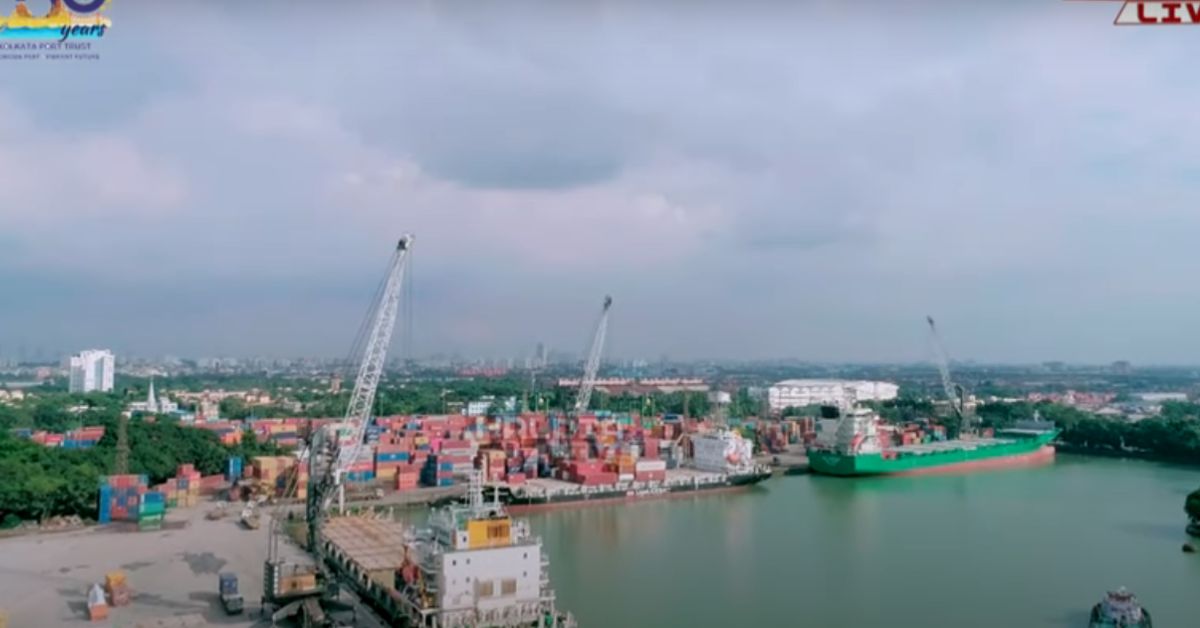This significant decision was taken by the Union Minister for Ports, Shipping, and Waterways, Sarbananda Sonowal, marking a pivotal moment in the port’s development journey.
The approved project will be executed on a Design, Build, Finance, Operate, and Transfer (DBFOT) basis through Public-Private Partnership (PPP) mode. The estimated project cost stands at Rs. 809.18 crore, underscoring the magnitude of this endeavor.
This project is poised to bring a paradigm shift in the operational landscape of the Syama Prasad Mookerjee Port. Key benefits include the establishment of an effective, efficient, and environmentally sustainable integrated cargo handling system, which will significantly bolster the port’s operational efficiency. Additionally, the creation of additional berthing and cargo handling facilities will cater to both import and export activities, thereby amplifying the port’s capacity and versatility, resulting in enhanced overall performance and competitiveness.
‘Under the leadership of the Prime Minister and by taking several initiatives at ports, the cargo handling capacity of the ports has doubled in the last ten years. The Mechanization at ports isn’t just about upgrading infrastructure; it’s about empowering our nation’s trade ecosystem with efficiency and global competitiveness,’ said Sonowal.
In West Bengal, the Sagarmala Programme oversees 62 projects valued at Rs. 16,300 crore, with 19 completed projects worth approximately Rs. 1,100 crore and 43 projects at various stages of implementation totaling around Rs. 15 thousand crore Additionally, 11 projects, partially funded by MoPSW, amounting to around Rs. 650 crore have seen 6 projects completed (worth Rs. 400 crore) and 5 projects (worth Rs. 250 crore) under development. Notably, the Coastal Districts Skill Development Program – Phase 2 – West Bengal, sanctioned for Rs. 6.32 crore, has yet to commence despite Rs. 2.10 crore being released in Dec 2019. Among the achievements, projects like Road Connectivity Improvement (worth ~Rs. 100 crore) have led to traffic decongestion and improved port connectivity, while the Upgradation of tracks at EJC yard of Kolkata Port (Rs. 47 crore) has enhanced operational efficiency and reduced incidents of derailment.
Under Maritime Amrit Kaal Vision 2047, various initiatives have been towards world class next generation ports which include developing port clusters involving major and non-major ports with capacities more than 300 MTPA, creation of deeper drafts (18-23 m) at ports, developing transshipment hub, developing two new major ports, reduce vessel related charges, increase private sector participation through implementation of projects under PM Gati Shakti – NMP and Asset Monetization Plan etc.
Further, Maritime clusters have been also identified in Maritime Amrit Kaal Vision 2047 Action Plan include creating industrial clusters along the ports which include DPA, VoCPA, SMPA (Haldia) and also at Andaman & Nicobar Islands. The key initiatives for creating the maritime industrial clusters include identification of models with private sector for developing the industrial clusters, identification of focus commodities for the industrial clusters, adoption of investor friendly policies etc.In addition to industrial clusters, development of three islands namely Greater Nicobar & Port Blair at Andaman and Nicobar Island can be developed as a bunkering hub and Ship repair respectively. In addition, Kalpeni Island can be developed for Vessel Spares and Stores. There are 30 initiatives identified under the theme, of which the key initiatives for developing these islands would involve infrastructure, institutional and policy/regulatory initiatives.
This transformative initiative underscores the government’s steadfast commitment to fostering infrastructural development and bolstering maritime commerce.







